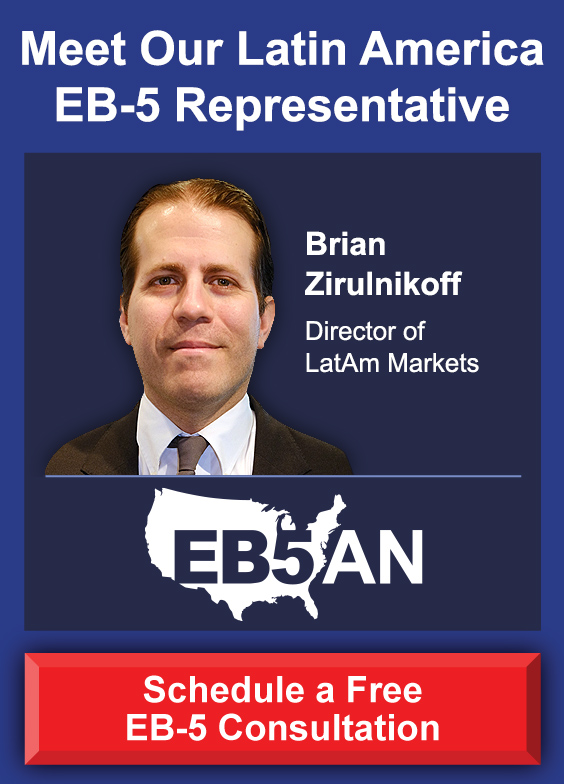In recent years, the tech industry has experienced a series of layoffs, and H-1B Visa workers have been hit especially hard. The EB-5 Immigrant Investor Program can offer investor visas to foreign nationals who want to remain in the United States.
The Challenges Faced by H-1B Workers
What are the Restrictions of an H1-B visa?
You’ve Lost Your Job. What Now?
What Are the Broader Implications?
Solutions
What Are Alternative Visa Options?
How Do I Get Started?
The Challenges Faced by H-1B Workers
Foreign workers with specialized skills who find an employer willing to sponsor them (if the employer participates in the H1-B Program), can be granted H1-B Visas to live and work in the United States. The most common field to employ foreign nationals in the U.S. is the tech sector. However, this industry has been severely affected by factors like market changes, company mergers, and the increased use of automation and artificial intelligence.
In 2023 alone, over 182,761 jobs in the tech industry were cut, as reported by Crunchbase. One obvious category of U.S. employees that was heavily affected by this rapid and significant downsizing, was H1-B Visa holders.
What are the Restrictions of an H1-B visa?
The H1-B Visa offers temporary residency. Your immigration status in the United States is tied to your employer and your job position. In addition, your immigration status is subject to review and renewal through an online employment verification program.
If at any time your role is eliminated or your employment is terminated, you would have approximately 60 days to find another role at the same company, a job with the same title at another company willing to sponsor your visa, or exit the United States.
Companies looking for employees with these specialized skills often execute searches over many months to find a candidate who’s an exact fit and has a long-term future in the role. Sixty days is not usually enough time for either the employee, or the prospective employer to cast a wide net and perform the necessary checks.
Important Note:
Although companies are not allowed to use an employee’s citizenship as a consideration in who is laid off or fired, legally speaking, a company’s only obligation is to H1-B Visa employees who need to notify USCIS of their change of employment.
The United States has long relied on immigration to drive innovation and growth, and many of the most successful tech companies have been founded or cofounded by immigrants.
However, many tech firms are beginning to publicize that they are shifting their practices toward hiring domestically, and even canceling their green card sponsorship programs.
You’ve Lost Your Job. What Now?
The impact of tech layoffs on H1-B Visa workers is significant. Many of these workers have lived in the U.S. for many years, and losing their jobs can be a devastating blow.
Finding a new job as a foreign worker in a dwindling market is difficult under any circumstance. In cases like these, the stress is compounded because losing your job could also mean losing your visa.
Most H1-B individuals are not living in the U.S. with a temporary mindset. They were offered a career opportunity, not just a job. They purchase homes and cars, start relationships and families, apply for loans, and put their kids in school. If their employment status should change, 60 days does not provide sufficient time to uproot their lives.
Despite this sentiment, H1-B workers must leave the U.S. if they cannot find new employment within a few weeks or successfully apply to transfer to another type of visa. According to immigration attorneys who specialize in employment law, some of those laid off while traveling outside the U.S. are now stuck outside of the country, as their work visa is no longer valid for re-entry.
What Are the Broader Implications?
Although it is hard to pinpoint an exact number, the American Immigration Council estimates that one-quarter of employees in the United States in science, technology, engineering, and mathematics (STEM) fields are foreign nationals.
What would it mean for the United States should it slowly lose the expertise of foreign employees and the innovative ideas they contribute? Canada recently eclipsed the United States as the most preferred global destination for overseas talent.
Solutions
There are policies in place that allow foreign nationals who are in the country legally to apply for an adjustment of status (AOS), and remain in the U.S. while their application is being processed.
The AOS process enables individuals who are already present in the United States to apply for a green card without having to leave the country. During the AOS application period, the foreign national may stay in the U.S., but they may not be able to obtain new employment without work authorization.
However, if the individual is eligible for AOS, they may concurrently apply for an Employment Authorization Document (EAD) and Advance Parole (A.P.) Travel Document. The EAD enables them to work, while the A.P. permits them to travel in and out of the U.S. as a visa holder while their green card application is under review.
The EB-5 Immigration Investor Program – An Alternative Visa Option
The EB-5 Immigrant Investor Program is a U.S. immigration initiative that provides foreign investors with the opportunity to obtain permanent residency in the United States in exchange for making a capital investment in a qualifying business or project.
Surya is an Indian national who moved to the U.S. on an F1 visa and moved on to an H-1B visa in 2020. After thoroughly investigating the EB-5 Immigrant Investor Program, he decided to invest, as this method of obtaining his green card was the fastest option he could find. Learn what he has to say about it:
Under the EB-5 Visa Program, foreign investors are required to invest a minimum of $1.05 million—or $800,000 in a targeted employment area (TEA) or infrastructure project—in a qualifying new commercial enterprise (NCE) that will bolster job creation for U.S. workers.
The EB-5 Immigrant Investor Program has become an increasingly popular option for foreign nationals affected by H1B layoffs who are looking to secure permanent residency in the U.S. One of the primary benefits of the program is that it does not require the foreign national to obtain a job offer from a new employer, or specialized employee visas.
If the investment application is successful and the job creation requirements are met, the investor and their eligible immediate family members can qualify for permanent residency in the United States. This includes the right to live, work, and study in the U.S. without restriction or expiration.
Unlike many other visa programs, which require individuals to renew their status with immigration services every few years, the EB-5 Program offers a direct route to a green card. This option could provide H-1B workers with peace of mind and stability, as it would allow them to build a life and career in the U.S. without having to deal with constant concerns about their visa status.
How Do I Get Started?
The EB-5 Program is a fairly common visa type and is considered one of the fastest visa categories, compared to other immigration routes, for foreign investors to obtain a U.S. green card. Unfortunately it can also be a complex and lengthy process with significant risks. Investors should consult an immigration attorney who has extensive experience in immigration law, and carefully research and consider all aspects of the program before they make an investment.
In addition, it is recommended that EB-5 investors conduct thorough research on potential investment options to ensure that their financial and immigration risk is minimized. This can greatly improve their chances of obtaining an EB-5 green card and generating returns on their investment.
EB5AN takes pride in offering low-risk projects.
Here’s a quick look at the eligibility criteria for an EB-5 Visa:
- Prove a lawful source of funds
You will need to demonstrate that your invested capital came from a lawful source, such as business earnings, sale of property, inheritance, gifts, or other legal sources. The source of funds must be documented and traced.
- Invest the minimum amount
You would need to invest a minimum capital amount, which varies depending on the location of the investment. Generally, the minimum investment required is $1,050,000; however, if the investment is made in an infrastructure project or within a rural or high-unemployment TEA, the minimum investment is reduced to $800,000.
- Invest in a project or business venture
The investment must be made into a project or business venture via a new commercial enterprise, which includes for-profit business entities such as a corporation, partnership, sole proprietorship, or business trust.
- Create the required number of jobs
The investment must create or preserve at least 10 full-time jobs for qualifying U.S. workers.
- Ensure an ‘at-risk’ investment
Your investment capital must be placed ‘at risk’. This means that you cannot merely pledge the money; it must be actively used to fund a project or business operations, and there must be a risk of partial or complete loss of the investment.
EB5AN – Your Partner In Navigating the EB-5 Program Successfully
Our dedication to the immigration and financial success of our investors is evident in each of our project’s strong financial position, job creation, compliance with USCIS regulations, and multiple guarantees for investors.
Why not schedule a free consultation to learn how an EB-5 Visa investment can qualify you to enjoy the benefits of a U.S. green card?
We look forward to guiding you through this exceptional and exciting opportunity!















